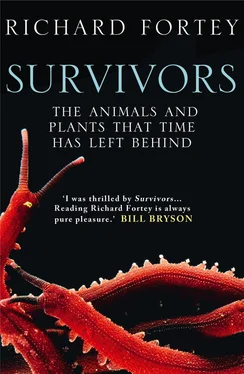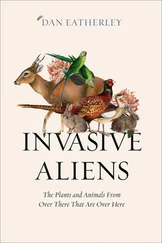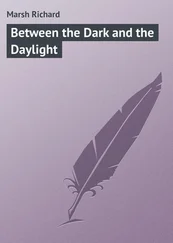Modern seaweeds are both plants and eukaryotes, to emphasise the point again, and do not build stromatolitic mounds. In Shark Bay, the majority of such ‘advanced’ organisms are discouraged by the low levels of nutrients available there; hence they leave the dominant cyanobacteria to cooperate in making different kinds of mounds. In the typical stromatolite the mode of growth is cumulative. The living ‘skin’ is a thin layer of growing threads matted and twined together. The technical term for it is a ‘biofilm’. The cyanobacterial mats are positively attracted to light and grow upwards. Any blown dust and other fine sedimentary material becomes incorporated in the surface layer and maybe provides the modest nutrient required. The slimy surface layer of the bacterium encourages the precipitation of calcium carbonate from its dissolved state in seawater, thus making a thin ‘crust’. A new living layer grows on top of the one beneath, and may be able to extend a tiny bit further laterally: this is why some of the stromatolite mounds are wider at the top than at the base. Naturally, the ‘blue greens’ are only able to grow in the sunlight that gives them nourishment, and are quiescent at night. Some scientists at the University of California even claim to have recognised daily growth increments. The overall rate of growth is extraordinarily slow, however, and certainly less than 1 mm a year (and possibly as little as 0.3 mm). It has been stated that some of the Hamelin Pool structures could be a thousand years old, that is, they grow more slowly than the slowest-growing conifer on land. The life and death of the wool industry would register as no more than a hand-depth on the height of a stromatolite column. Time can be ticked out in microscopic laminations, and history reduced to a measuring stick made by timekeepers invisible to the naked eye.
Stromatolites vary in form according to where they are found on the shore. It is easy for me to see that ones at the edge of the sea are little more than pimply mats. At least to this unschooled observer, some of them superficially do not look very different from some of the mats that covered sediment surfaces in the Precambrian at Mistaken Point. They are made particularly by one of the spherical, or coccoidal types called Entophysalis, and the internal layering is not well developed. Further down the shore in Hamelin Pool the stromatolites that I tentatively touched represent the dominant kind in the intertidal zone, with a typical columnar-cushion shape. This kind of column is constructed particularly by a filamentous cyanobacterium called Schizothrix, which under the microscope is an intense emerald-green colour. It has lots of apparent partitions that make the organism look something like an old-fashioned tube of circular cough sweets. These particular stromatolites are very well laminated internally, so that the mechanism of being built up layer by layer is particularly patent. It has been proved that the cushions ‘lean’ a little to the north, each component filament attracted preferentially to the sun (but on such a minute scale) in this, the southern hemisphere; the god Ra evidently ruled in the prokaryotic shallows. Further out to sea again, to a depth of a little more than three metres, there live the lumpier, bumpier, lobed, and somewhat rounded stromatolites that are a collaboration of many different microbes. These include cyanobacteria of the genera Microcoleus and Phormidium; the latter is another concatenation of delicately segmented threads, while the former comprises microscopic ‘ropes’ made up of bundles of a kind of entwined green spaghetti. The different species collaborate to grow together, like a confederation of medieval guilds, with each tiny specialist contributing to the function of an integrated community. True algae – diatoms – may chip in as part of the community among the deeper water stromatolites, but this group of eukaryotes probably did not evolve until much later. Beneath the surface skin of the growing mound, bacteria of a different kind from cyanobacteria process waste products and can cope with low, or even no oxygen; they are like artisans that moved the dung from the streets of the medieval village and made it a trade. Life encouraged specialised habits and habitats from the first.
Stromatolites are the most ancient organic structures, and their recognition as fossils transformed the way we understood the endurance of life on earth and the evolution of its atmosphere. I admit that viewed with complete impartiality when it comes to visual impact, the Shark Bay mounds are not on a par with the Empire State Building or the pyramid of Cheops. But stromatolites are one of the wonders of the world. Rationalists are not permitted to have shrines, but if they were then Shark Bay, where stromatolites were discovered alive, might be high on the list. Although many more living stromatolites have since been discovered, those in Shark Bay have been most thoroughly studied. From their initial recognition in 1954 the fame of these living stromatolites spread, until by the late 1960s they were finding a place in textbooks. As so often happens in science, the discovery of these living mounds happened just when palaeontologists were making major finds of microscopic fossils in rocks of Precambrian age, opening up debates about the biological history of the earth. The strange creatures of the Ediacaran, like Fractofusus and Charniodiscus, took the record of life back tens of millions of years before the great burst of familiar fossils such as trilobites that appeared in the Cambrian, 542 million years ago. But there remained more than three billion years of the history of life on earth in the Precambrian still to account for. This was the era of the stromatolites.
It is necessary to have a digression on geological time at this point. The age of the earth had been established at close to 4.5 billion years by the time Shark Bay was becoming known to the scientific world. The precision of this figure was largely a consequence of refinements in dating techniques, using the slow radioactive decay of naturally-occurring uranium isotopes into other isotopes of lead: turning rocks into clocks, one could say. The samples collected from the moon by the Apollo Mission were first unpacked on 25 July 1969. I recall the excitement of seeing a small black piece of the earth’s barren satellite when samples from the collection made on the Sea of Tranquillity were distributed to major museums, including the Natural History Museum in London. Like the stromatolites, it was not so much the thing itself; it was what it implied that made it so special. After the moon rocks were dated using the best technology of the day the question of the antiquity of the green planet to which the moon was partnered was finally laid to rest: 4.55 billion (plus or minus 0.05).
The geological time period before the Cambrian was simply known as Precambrian for more than a century – after all, that is what it undoubtedly was, ‘before the Cambrian’. But when this time period was recognised as so vastly long, it became necessary to divide it into several named chunks to help us order events in the earth’s history. The Archaean Era is that part of deep geological time that ends at 2500 million years ago, or 2.5 billion years if you prefer. After this came the Proterozoic Era which, in terms of strata, lies above it and extends to the base of the Cambrian Period 542 million years ago (the Cambrian is the first subdivision of the Palaeozoic Era).
The Ediacaran, the latest addition to the roll call of geological time, begins at 635 million years ago and is slotted into the top of the Proterozoic. The Proterozoic Period covers a very long period, and these days is usually divided into three which used to be known as Lower, Middle and Upper, but are now formally known as Palaeo-, Meso- and Neoproterozoic respectively. The Neoproterozoic begins arbitrarily at 1000 million years ago, and the Mesoproterozoic at 1600 million years ago (1.6 billion), so the Palaeoproterozoic occupies the time period 2.5–1.6 billion years ago. Names really do help us get a grasp on the immensity of geological time, though phrases like ‘Palaeoproterozoic digitate columnar stromatolites’ do not exactly trip off the tongue. But it is as well to get our labelling sorted out.
Читать дальше












